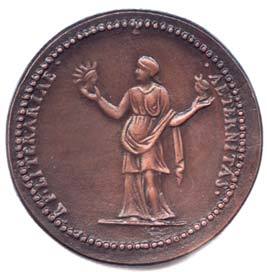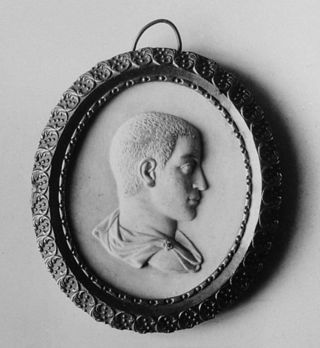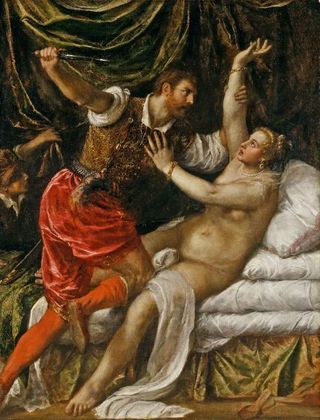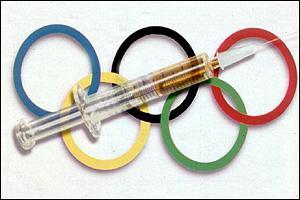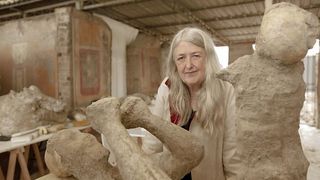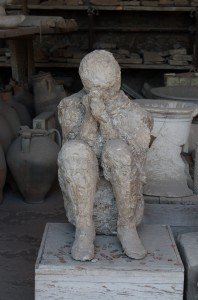Mary Beard's Blog, page 15
March 31, 2016
The Wrong Caesars
I hinted a couple of posts ago that I was planning to visit Anglesey Abbey over Easter. I was on the trail of a set of four Caesars, paintings (done in the seventeeth or eighteenth century?) based on some engravings of emperors by Antonio Tempesta. That is Claudius above, in the painting. And below, it's him in the Tempesta engraving. Obvious.
 The other three emperors at Anglesey Abbey are said to be Hadrian (directly above), and Caligula and Nero (to left and right below).
The other three emperors at Anglesey Abbey are said to be Hadrian (directly above), and Caligula and Nero (to left and right below).
It doesn't take much to see that there is something the matter here.
For a start, if it is Hadrian why isnt he bearded? And anyway to my knowledge Tempesta never did a Hadrian. His set of emperors was the Suetonian Twelve, from Caesar to Domitian.
If you go back to the Tempesta engravings it is as clear as day that what we have here is a Caesar (not Hadrian), an Augustus (not Caligula), and a Vitellius (not Nero).
I have put the Tempestas at the very bottom of this post, to make the point. But my questions are these. First when did they become misidentified? My current project is interested in the long history of imperial mistaken identities. And in this case it seems pretty clear that they have long gone under the wrong names (at least those are what are inscribed on the relatively old frames).
Second, where are the others? I dont really imagine a painter would pick those 4 from the set of 12 to convert to paint; so I am looking for 8 more. Has anyone seen them. There are other Tempesta version of emperors on the web, but not in quite the same style or size. My set are quite small (not much more than 60 cm by 50 cm), and as they are not named in the painting (and as they dont hit you in the face as Roman emperors), they might be lurking under yet another identity.
March 27, 2016
A paperback and a medal
I have a big few days coming up. First the paperback edition of SPQR comes out, technically on 1 April. This isn't quite like the experience of the appearance of the first hardback edition. If that is like giving birth, this is more like celebrating the child's first birthday. We're going out to dinner to mark the occasion -- and I'm also talking at an LRB event at the Senate House in London on the 1st (which I think is all sold out), and doing a few radio interviews. The pleasure really is that the book meets a new audience. There have been some very good deals on the hardback (which is a really lovely product, all writing apart). But the paperback is going to be widely available for under ��7.50, and in handy "shove it in your suitcase" form. So that is something to be pleased about.
Perhaps even more to be chuffed about is that on 5 April, I am going to be talking in Oxford and receiving 'The Bodley Medal" (that's one side above, the other below).
This medal is, let me be the first to admit, is a bit above my usual range. Its two images are: first a portrait of seventeenth-century Thomas Bodley, the Bodleian Library's founder; and second, a gracious lady representing 'the Republic of Letters'. It was first made for Bodley himself, but in 2002 those clever Oxford types rescued some copper from a restoration of the Library's roof and put it on one side to make a series of replica medals to be awarded to those who have made 'outstanding contributions to the worlds in which the Bodleian is active including literature, culture, science and communication'. It has been given to Alan Bennett, Hilary Mantel, Seamus Heaney, David Attenborough, P. D. James, and a few other equally distinguished characters. And now me. So you see that humility will definitely be the order of the day.
The ceremony is in the early evening of next Tuesday, the 5th, and immediately before the presentation I shall be talking in the Sheldonian with Bodley's current Librarian, Richard Ovenden. That starts at 6.00, and there are still some tickets I think (big venue!). Hope to see some of you there, for moral support etc.
March 25, 2016
The Easter hols
Leaving all the religious aspects aside, Easter is a very different kind of public holiday from Christmas. For a start it's a movable feast, and despite all the commonsensical reasons for fixing it, I would rather like it to stay that way, for the sheer variety. Sometimes, like this year, it feels like Easter is still in winter; other times, it happens when May is already in sight. But it also amounts to two bank holidays that still have a bit of a ritual and fitting music on the radio (unlike what happens in August) but are nevertheless very low maintenance.
When the kids were young, the biggest activity was the Easter egg hunt which usually happened in the large garden of my friend Sue Benson, who had a skill in hiding the eggs in places that would seem challenging even to a twelve year old (jammed into the bark of inconveniently high tree branches, for example -- when the kids always thought they should be looking on the ground). The combined hunt and consumption (stopping if you were lucky just this side of vomitting) gave the grown-ups a good two hours of peaceful drinking.
Now, short of importing some surrogate grandchildren (no thanks), there is just one traditional meal to be cooked: the leg of lamb on Sunday, a 'sudden death' meal in the sense that you dont need to have been making some of the key elements (like the Christmas pud) for weeks: an in-and-out of the oven job, which you hope comes out with enough bits of red for those that like their lamb bloody, and brown for those with a partiality to the well cooked.
What this means is four days in which you are at liberty to do "something else".
I wouldn't like to say that meant no work, but rather an excuse to work in a different gear and at a different pace. For me that is going to mean a trip out to one of the local National Trust properties, Anglesey Abbey, where some rather good Roman emperors lurk, and what you might call some 'background reading'. I've already enjoyed Brian Dolan's book on Josiah Wedgwood (Wedgwood, the first tycoon). I am getting a little further with the plaques I wrote about a couple of posts ago, but have been feeling I needed a gentle introduction to the Wedgwood family in general, particularly before I go to look at the archives and such. So I borrowed Dolan from the UL, pretty much on spec, but also thinking that he was a good historian who could write for non-specialists (in this case me).
It hit the spot, as required. I can now talk without total ignorance of the Josiahs, Johns and Thomases in the family. But, like so many of these early modern biographies, it proved heart wrenching too. As I read on, I found myself increasingly warming to Sally (Mrs Wedgwood) and to her combination of spark, jollity and misery And I mean misery. I was nearly crying when I came to the week in her life when, in the space of a few days, she had to look after Josiah when he had his leg amputated (anaesthetized by not much more than a drop of laudanum) and lost her baby son, Dicky.
I am sure that it was unthinkably agonizing for Josiah, but I couldn't help feeling for Sally. Happy holiday reading.
March 19, 2016
The problems of being called Beard
I have never much bothered about having the surname "Beard". In fact, there are considerable advantages -- like being near the start of the alphabet, and being easy to spell. And when it comes to jokes, they are for the most part pretty anodyne/juvenile. "Ho ho, the bearded lady.." etc, or the not hugely imaginative insertion of a beard onto a picture of yours truly. In short I can think of worse names to have.
But I have come across an extra little problem.
I have, as some of you may know, the occasional habit of looking under the line of online newspaper articles that I have written (or less often written about me). I dont intervene if people just say that they disagree, or even fulminate about what a ghastly person I am. But if they raise points that need a reply, or if they say that I said something that I didn't ('"this woman thinks the Roman empire fell because of the lead in the pipes"), I do tend to say words to the effect of "nang on, I really dont think I said that". Whether this is a good idea or not, I dont truly know. But if people comment, then I think that if you've written the piece, then replying can be construed as part of the job.
There has, however, turned out to be a problem. I have from time to time replied to comments in one particular major national newspaper (nameless), which has a tradition of, shall we say, forthright comments. And it has proved harder than I reckoned. Yesterday was a typical example. There was an article about the style of tv presenters, me included. And someone commented on my recent Pompeii documentary as follows: "The documentary was great, she was bloody awful. Way out of her depth."
"She was bloody awful", was fine by me (free country and all that). "Out of her depth" (on Pompeii? or even on telly?) I thought was simply wrong. So I politely said so.
The trouble was that my comment never appeared, over hours and hours, while other stuff was pouring in to the site. I had been here before, so I guessed the problem. "Beard" -- for the innocent -- is a slang term for women who knowingly pretend to date someone to conceal their sexual orientation. So on this paper, one of the means of moderation is simply to block for later (much later) human moderation, any comment that comes from someone supposedly called "Beard" as their on-line name (quite why the same doesnt happen to those who simply attack "Beard" is a mystery to me).
I had got a bit wise to this, so I emailed one of the moderators and he sorted it (they have always been very helpful, I must admit). But why the hell "Mary Beard", who is actually replying in her own name to people being a tad inaccurate,should be prevented from keeping her end up, I really cant imagine! That's my problem, I guess.
March 17, 2016
Who's buying the Wedgwood?
My project on images of Roman emperors (modern-style) is not going to be exclusively concerned with palaces and princes, with Mantegna's Triumphs and pricey sets of marble busts lining grand corridors. I am also trying to see how Roman imperial images entered the visual world of far more "ordinary" people. And one obvious category to explore are the small Wedgwood portrait medallions that come, like the one above, in black basalt ware, but also in characteristic Wedgwood blue. They are just a few centimetres tall.
I am only just beginning on this (and I know that a visit to the Wedgwood Museum and Archive is going to be a must), but I am beginning to get a sense of the questions. There has been some work done on these portrait medallions in general, but not a huge amount (if you think I am missing something big, do let me know). There are a whole range of them, from 256 popes (not a huge commercial success....unsurprisingly?) through kings, queens, philosophers and playwrights, to 78 Roman emperors and empresses (this wasn't just the 12 Caesars). And there was an exhibition at the National Portrait Gallery in the early 1970s. Some of the questions I want to raise, usually asked and not asked, are coming into focus.
There are some obvious issues of production, design, identification and connoisseurship. The black basalt variety began to be produced in the late eighteenth century, but had a long history and a long history of imitation and fakery (apparently a depression on the back of the medallion matching the portrait on the front is a good sign of an imitator). And some of the emperors (though I haven't looked hard at this yet) have proved hard to identify, when the name isn't scratched on the back. The one at the top of this post appears on the Wedgwood museum site both as Agrippa (not an emperor) and Claudius (not an overwhelming resemblance). And, in a nice case of constructive misindentication, it is said that A E Housman was given one as a present when he left his job at the Patent Office: his colleagues chose a medallion of Bentley, meaning the textual critic; in fact they got one of the Bentley who was Wedgwood's business partner.
But I am just as interested in who bought them, and how they displayed them. Some are found as plain medallions. And the ones I have picked up are like that and quite difficult to display nicely. But other like Valerian above have been mounted (by their purchaser?) into little frames and then, I guess, hung on the wall. But on whose wall? What kind of house dd they decorate? And did they become a growing hobby? Did you buy Julius Caeasr and then go on till you had 12? And then get the matching women too? Were they a commercial success precisely because those with not huge amounts of ready cash were encouraged to collect, one by one?
And how did it change over time? The Wedgwood museum reckons the medallion at the top is early twentieth century. How did a collection of mini-emperors signify differently then from the late eighteenth? Does anyone actually remember seeing a set of these hanging on their grandparents' wall?
March 13, 2016
Living with a Museum
One day someone will write about how (for some of us!) 20th and 21st century lives interacted with museums.I have lived for more the 40 years a 20 minute bike-ride from the Fitzwilliam Museum in Cambridge, and in many ways it marks my life. It has not always been a smooth or easy ride, and I guess that there has been in some ways a bit of a stand off been me and the museum; but we end up very, very firm friends.
My first real memory goes back to 1973 when I was in my first year reading Classics. Our first 'Art and Archaeology' supervision was with the then curator of Antiquities in the museum, Dick Nicholls. He had put a group of miscellaneous classical objects in a case in the public gallery, which we -- as first years -- had to identify within a week (my discovery of Nicholls's own catalogue of classical sculpture in the Fitz helped, I confess). A decade or so later, when I had young kids, the family had a bit of a run in with the then director, who said that it was impossible to bring buggies into the museum (in case they bashed the precious furniture). And at about the same time (this is back in the 80s) I had a few troubles with the then archivist who didnt want me to see the records of museum purchases in the late 19th century (for reaons of commercial confidentiality, believe it or not).
I could go on and on. But almost all of these inciidents have ended with a happy outcome (Michael Jaff��e didnt give in on the buggy, but the next director, Simon Jervis, let me loose in the archive). And I have lived happily with the Fitzwilliam ever since, almost as part of me. I'll go to my grave with Fitz's 'Rape of Lucretia' written on my heart.
And that is why I am pleased to see the new history of the Museum, just published. It's wrtten by Lucilla Burn (who was another of those scared young ladies who in 1973 looked at Dick Nicholls's quiz case in puzzlement and wondered if we woud ever make it). So I am biased. But this is not a puff. Burn's history, for me, joins up the dots of a wonderful collection whose story I have never really understood altogther. It's a great read, with wonderful pictures, and winning anecdotes: from the Vice-Chancellor who came in over the Christmas vacation to remove the nudes from such obvious view, to the puzzling theft of a load of prints from one of the early directors, Sidney Colvin.
It all makes me realise that I'd hate to do without my local museum.
March 11, 2016
Drugs legal and illegal
We will no doubt have to wait several months before we know something close to the truth about Maria Sharapova's substances, and whether she is deemed to have made an innocent error, whether and for how long she is banned, and whether risk averse companies who have severed their connections with her at the first hint of trouble decide to hitch up with her again. But from the outside, whatever the facts of this particuar case, it seems to point to many of the illogicalities of drug rules in sport.
The story appears to be that Sharapova has been taking this drug, meldonium or mildronate, on and off for 10 years, for medical reasons (even though most doctors claim that it is only prescribed for short term use) and had failed to notice that it had recently been placed on the banned list of performing enhancing substances. Whatever the truth, the general picture it conjures up is fairly clear.
In any sport where a lot of money is up for grabs or where huge national prestige is at stake (so I mean tennis rather than tiddly winks) there is a huge incentive to win. I rather doubt that they is any money making or big prestige sport with an entirely 'clean culture'. There are no doubt many clean individuals, but the practice of cheating tends to follow the money and the fame. Where winning brings big rewards, then a few will do or take anything they can to win, while hoping to avoid getting caught (though that is getting harder); many more will take any steps that remain on the right side of legality, from weird diets to pharmaceuticals that haven't been banned (yet).
I find myself wondering about the logic of all this.
Almost everything that a high class athlete does to turn themselves from an average healthy, fit and active person to a world champion sports person is in some way unnatural. So where are we going to find a logical point to draw the line between unnatural and legal, and unnatural and illegal. Of course, there are some extremes that we will find it fairly easy to agree on. If you really are mad enough to train 14 hours a day, no one is going to suggest that that should be banned (though, if it works, it may be unfair on part-time athletes with jobs who simply dont have those hours free). On the other hand we dont feel it legitimate for the female shot-putter to be taking male hormones in the interests of success (though there may be some transgender issues that may turn out to muddy some aspects of that particular certainty). But it's all the things in between (like meldonium) that cause the problems. What for example is the difference between a 'natural' foodstuff that increases blood flow and a man made one?
One might think that confronted with all these conundrums, it might just be easier to throw one's hands up and say OK, lets have a free for all, and let any athlete do whatever they choose, in the interests of going faster, longer or higher -- to accept, in other words, that high level sport is not about being natural or 'fair', and that we might as well stop pretending it is. But then there is the other point about the banning of 'drugs'. It's presumably not just done to ensure a level playing field (in the metaphorical sense), but to stop athletes being put under pressure to harm themselves too much. All highlevel sport harms the body in some way and should come with a health warning (arthritic knees is only the start). But it is still a good idea to prevent women, who probably don't have much choice in the matter, being pumped with male hormones to get a shot-putting record.
These dilemmas are familiar to every parent. I dont know any mum, dad or carer who hasnt struggled to explain to a curious child why the use of some pleasurable drugs lead to an appreance in court, others are known to be killers but are officially fine (so long as puffed outside), others are what get poured out at home most evenings.
I, of course, have been on Lenten abstinence, so off the demon drink. I am usually disappointed by how little difference this makes to my general feeling of well-being. But this year after just over 21 days off, I allowed myself an evening back on -- to watch my Pompeii tv programme. I didnt think that I could actually face it, or the social media comments (which actually turned out to be really nice) without a bit of Dutch courage. It workied in a way, but I woke up the next morning not exactly hung-over, but well aware that I had spent the evening before consuming some kind of poison.
March 6, 2016
The exclamation mark police
I am not meaning this flippantly, as I know well enough from friends and family what a ghastly illness Alzheimers is. But my heart sank this morning when the radio news announced that the government had decreed dementia checks for all of us over 40s. The truth when I read it didn't seem quite so draconian (more about advice than anything else). But I was already predicting the little brown NHS envelope through the door, and a couple of days spent learning up the kind of questions that I know memory tests are keen on. I can do the one about the name of the Prime Minister OK, but the day of the week sometimes eludes me (I'm currently on research leave and that does tend to remove the institutional pattern of everyday life). And I have never been able to do visuo-spatial ability tests (probably means I dont have any), so I had already fast-forwarded to what would happen after I had failed to identify how the image would look when rotated 90 degrees anticlockwise. Would they believe me that it was nothing to do with me being 61, but that I had always been bad at it.
It is I guess the trade off that comes with mass health testing. You get an early diagnosis for a few, at the cost of putting more into a blind panic. Much the same goes with things like mass prescription of statins. Globally it saves lives, but it might not save yours even though you've been tied to taking them for 20 years. It's fair enough for public health officials to think the trade-off is worth it, but it's also hard not to suspect that it is a way of delivering mass health care without much of a personal element: the just 'give it to everyone' approach, or at least try to. I feel that every GP's surgery in the land should have on the wall of the waiting room a list of those procedures that the doctors have been 'incentivised' (ie paid extra each time) to carry out.
And its becoming not all that different in "mass education" too.
There was a time when we used to laugh at the French for governmental control of the classroom. Now we have almost come to accept that, rather than adopt any form of nuanced approach, still less leave anything to the discretion of examiners and teachers, central government will lay down rules about everything down to the use of the exclamation mark. If it's been correctly reported (and in all such things that's a big if), the Department of Education has insisted that primary school children will only get credit in tests for using exclamation marks in sentences beginning "How" or "What". So OK is "How awesome is that!" but not OK is "Awesome!".
Now I am not a great lover of the exclamation mark (except in Twitter -- and I would admit more in blogs than published articles). But I am far from convinced that a blanket rule that would penalise, or at least not reward, both "I am really looking forward to seeing you!!!!!!!!!!!!!!" (wouldn't a sensible examiner have penalised that anyway?) and "Stop!", while rewarding "How nice to see you!", seems to me not worth the paper it's written on.
But I fear that the whole idea is to give examiners no leeway to be sensible, in the interestes of yet another example of one-size-fits-all (pseudo-)parity.
????!!!!!
March 2, 2016
Some serious fun on Newsnight
Kirsty Wark is a real sport. As a kind of spin off from our grey hair programme (to be broadcast on Friday morning at 11.00 on Radio 4, in case you've forgotten), Kirsty and the Newsnight team agreed that she should go grey for an evening: that is present the programme in a silver wig. And they made a nice package to introduce it. (You can see the whole lot here , including the interview with me. ) It was of course a stunt, but not just that.
For a start the change was really interesting, and surprising. Almost everyone we talked to in the radio programme had given a desire for youthfulness as their main reason for colouring up their grey. Having a color makes you look younger, it removes the invisibility in which the greying process cloaks women, it is empowering . . . or that is what we were told. In fact, what was striking was that Kirsty didnt look a jot older with the grey and in a funny way she actually looked rather more powerful and noticeable, not less.
Very much the Christine Lagarde, silver vixen look.
But there was even more to it than that. It wasn't simply the way to fill the end of a programme on a non-news day (though a few hasty tweets did insinuate that). How people look when they get older, and the gender differences in that, is diagnostic of much wider and imporant aspects of ageism. As I think I say in the interview, why do we usually take it as flattering to be told that we look 10 years younger than we really are? (If I'm 60, why cant I be happy to look 60?). And why do we regard craggy males with a shock of white hair (or thinning for that matter) as somehow authoritative, while wrinkly grey haired ladies are often taken to be quite the reverse.
And of course television is the classic arena of that gendered divide. There are plenty of craggy white men fronting our news and current affairs. The women seem to survive only by pretending to avoid the very aspects of maturity that give the blokes their authority. So Kirsty's 'grey for the day' performance was asharp and good humoured attempt to bring us face to face with those issues. I feel quite pleased to have had a tiny part in it. Thanks all.
February 27, 2016
Pompeii meets grey hair
You will probably think that I have been spending most of my time recently in front of a camera or a microphone, because next week I have a BBC1 documentary on Pompeii being shown on Thursday (at 9.00 pm) and a Radio4 documentary on grey hair on Friday morning at 11.00. In fact, both of these programmes had been more or less finished with my input months ago, but quite a huge of time is used up between finishing the shooting/recording and transmission (editing, music, voice over, capturing that one last sequence) ... and it is actually a complete coincidence that they end up getting their first outing within 24 hours of one another.
(It reminds me rather of when my book on Roman laughter came out very close to my Confronting the Classics. People thought i had been unbelievably productive in a very short time, but actually the timetable of my own completion was months and months apart and pure coincidence that they emerged into the world with a misleadingly short gap.)
Anyway, I do hope you will look and listen.
Pompeii: New Secrets Revealed (yes I know that the title is something of a tautology... 'secret' being, in a sense, by definition 'new') really does offer a new side of Pompeii, and some big questions. That's partly because an enormous amount of EU money has been ploughed into Pompeii recently and our team was the first to see some of the spectacular results, which will really be a huge boost to any visit to the site. People often complain that not enough houses are open -- well some more, freshly restored, will soon be on track, and our programme gives you a sneak preview. But we also get a chance to explore the "bio-archaeological deposit", where all the presered food stuffs, and various vegetable materials are stored. I felt like a kid in a candy store in there, with the dates and the olives, the paints and pigment, writing tablets and (very over-done) loaves of bread. And I have a memorable and slightly poignant visit to the brothel by night, and to the amphitheatre by day.
The headline, though, is the examination of the plaster casts with a team of scientists (and a CT scanner). These are in many ways the most famous, if ghoulish, attractions of the site (and you can see them in both the pictures above). They have been made since the mid nineteenth century, when archaeologists noticed that around many of the skeletons they unearthed there was a puzzling cavity in the volcanic debris. They worked out that it was where the clothes and flesh had disintegrated, leaving a hole; and they also saw that if they poured plaster into the cavity, they would end up with an exact image of the dead person in the position in which they died, with the traces of their clothes, shoes and sometimes their features. And so indeed they did.
Over the years, all kinds of stories have grown up around these casts and they have been given identities, roles and names: from 'the Moor" to 'the beggar' or 'the pregnant lady'. But noone has been able to take a look, certainly not inside the casts, to see just how plausible any of this is. That is what we were able to do with the scanner and some X-ray equipment, and we were able to think about their ages and state of health, and whether there was anything to back up the usual identifactions (was the person pregnant, for example, or was their clothing just bundled up around their middle?). You wont be surprised to learn that there were some surprises!
I do hope you'll watch and that we'll get a good audience... not just for M Beard's amour propre, but because if we want more of this kind of documentary, it has to get decent ratings! (Can't say I am over the moon to find it timed against Bear Grylls and a new series of Murder!)
Then if you havent had enough of me, you can tune in to Glad to be Grey, where we explore all kinds of aspects of greying, colouring, tinting and rinsing, from the glass ceiling of ageing to the commercial aspects of colouring (most likely it's what pays your salon's rent). And one of my dear, and sporting, male colleagues explains why he colours his hair (and we have a jolly good argument on the subject!). For me it's another programme full of surprises, from the wonderful Jo Hansford, colourist to the stars, who was endearingly frank about my mane, to the amazing Joan Burstein and her daughter Caroline, both at the heart of the fashion world, who thought colouring an ineffective and slightly embarrassing disguise. And the big one was how hard it is to get any man to open their mouth on the subject! For women, it's part of common talk, whether you colour or not, whether you feel ambivalent about it, forced into it or joyous, etc etc. For men it appears to be still largely closet.
Mary Beard's Blog
- Mary Beard's profile
- 4110 followers









